When choosing the material for your bathtub, remember that it determines the durability and ease of maintenance. You’ll also need to be mindful of how much weight your floor can handle. A wooden structure, for example, can’t support as much weight as a concrete one. The main materials used for bathtubs are plastic, composite, metal, stone, wood, porcelain and ceramic.
Plastic: Reinforced acrylic is an inexpensive choice that maintains water temperature well but provides a soft surface that can be easily scratched. Clean this surface gently. It comes in three varieties: fiberglass, which is lightweight, durable and economical; toplax, an ABS-reinforced acrylic, which is shock-resistant, non-slip, very light and 100% recyclable; and technolax, a rigid and highly resistant composite material with reinforced thermal and acoustic insulation.
[+] A non-porous material, will not absorb any excess water, (with the exception of fiberglass)
[+] Retains water temperature
[-] Can flex
[-] Prone to light scratching
Fiberglass: This variety of reinforced acrylic stands out because bathtubs made from this material are lightweight— easy to install—and inexpensive. It is a porous material, though, with a tendency to absorb water, which causes warping and cracking, but fiberglass repair kits exist to fix the deterioration issues.
[+] Affordable
[+] Lightweight, easy to install
[+] Damages are easily repaired
[-] Possibly the most brittle material on the market
[-] Porous, absorbs water and tends to crack. Can warp and feel unstable
[-] Color and finish deteriorate from cleaning with time
Corian: Many brands use special composites, such as Corian®. Corian is one of the solid-surface materials newly used in the bathtub market. It is easy to clean and is nonporous so stains do not penetrate the surface. If properly cleaned, it can resist the growth of mold, mildew and bacteria. It is also resistant to scratching, stains, chips and cracks.
[+] Durable and easily repaired
[+] A non-porous material, easy to clean
[+] Retains water temperature
[-] Somewhat heavy and relatively expensive
Resin: The term resin includes rotomoulded polymer and the polyester resin.
Rotomolded polymer has a pleasant texture, while polyester resin is highly resistant thanks to a reinforced gelcoat. Resin composites can look like ceramic or stone but aren’t as heavy or expensive.
[+] Durable, highly resistant to scratches and chipping
[+] Easy to clean
[+] Retains water temperatures
[+] Not as heavy as stone or steel, but has the look of stone
[-] Requires regular cleaning; sandpaper and a polishing compound is recommended.
[-] On the pricey side
Metal: Cast iron is the traditional material for bathtubs. Enamelled cast iron is very heavy but extremely resistant and keeps in the heat. Steel is very resistant and easy to maintain. Steel retains heat well and is much lighter than cast iron. However, steel gives off a “sound box” effect. It’s advisable to insulate the underside of the bathtub with soundproofing plates, for example.
[+] Most durable, highly resistant to scratches and chipping
[+] Easy to clean
[+] Retains water temperatures
[-] Perhaps the heaviest material
[-] On the pricey side
Stone: As a very strong and durable material, stone can last many years. Although the color of the stone might slightly change over time, it won’t crack. Stone retains heat for a long time so it is good if you like taking long warm baths. Its main disadvantages are that its expensive and extremely heavy.
[+] Strong, long lasting
[+] Retains heat
[-] Expensive
[-] Heavy
Wood: There are many types of wood so this is a general description. Wooden bathtubs can be rather pricey, but the natural material creates a luxurious experience. Exposure to extreme moisture can eventually damage the material, warp or crack, but it’s recommended to use the wooden bath once a week to avoid it drying out. The smell and feel of the wood reconnects the bather to nature and, while expensive, wooden bathtubs are highly customizable and can be adapted to your needs.
[+] Reconnects bather to nature
[+] Can be customized
[-] Expensive
[-] Damages over time
Ceramic: This material combines natural clay mixed with water and, sometimes, other organic materials. It’s shaped and decorated, often glazed and hardened by heat. Therefore, it is a broad category that includes pottery, earthenware, terracotta, stoneware, porcelain, etc. The bathtub can be made of solid ceramic, inside and out, or its exterior can simply be covered with ceramic tiles. However, most are made of solid ceramic. This material is scratch resistant, but hard impacts will cause chipping. It’s easy to clean by using mild detergent or baking soda. However, its smooth surface makes it rather slippery. It also does not retain heat well so long warm baths aren’t so easy—you’ll need to continue adding hot water to your bath if you plan on staying in longer. While the water cools quickly, the surface of the tub remains warm.
[+] Scratch resistant
[+] Easy to clean
[-] Does not retain heat well
[-] Hard impacts cause chipping

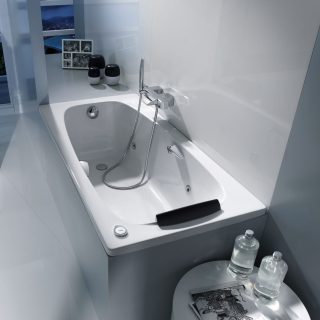
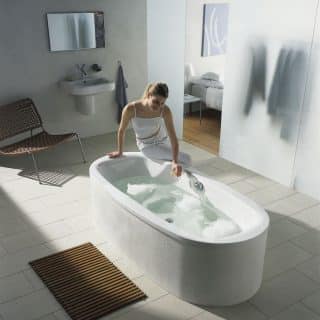


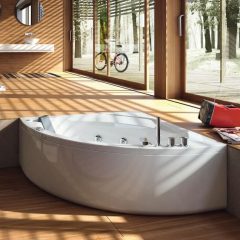

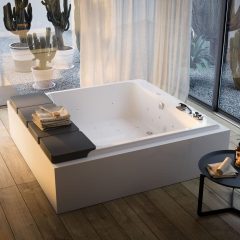
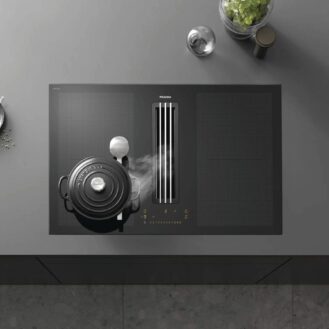
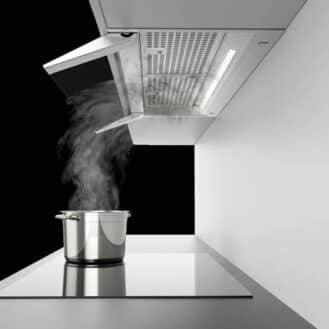



 (3 votes, average: 3.33 out of 5)
(3 votes, average: 3.33 out of 5)